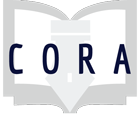Description: The Database Scavenger Hunt engages pairs of students in locating specific information or performing specific tasks across multiple resources. Each team works through a series of 16 questions/tasks, with verification of correct answers from the librarian/professor after every 1 or 2 questions, then places a mark on the corresponding wall grid of questions once an answer is deemed correct. The process repeats until the team completes all questions.
Assignments
Algorithms are not neutral but this does not mean they are not useful tools for research. In this workshop on algorithmic bias, student learn how algorithms can perpetuate bias and discrimination and how to critically evaluate their search results.
The assignment supports students' ability to explain their research in less than 50 words effectively. Students briefly introduce themselves and their research projects by answering the following questions in the discussion board post:
The first in a series of six courses, students focus on the Pharmacists’ Patient Care Plan involving prescription medications, patient history and more complex patient cases with an emphasis on culture humility. This one-shot is intended to help solidfy the lessons taught in previous classes I have with the students (such as Boolean and library services) and allow them to explore the needs of searching for traditional, complementary, and alternative medicine.
This lesson actively engages learners in the process of evaluating an information source using the SIFT technique, designed by Mike Caufield. The approach uses lateral reading techniques and the lesson encourages learners to apply and reflect on the technique as it pertains to a specific information need.
To practice thinking about what sources work well together, instead of choosing sources, students will choose who to invite to a small dinner party. The goal is to put together a group of guests that will be able to find enough common ground to have interesting conversations.
In this scenario based activity, students are asked to help 4 of their classmates evaluate 3 sources they are considering using for their paper. Students can read the entirety of each source, then write a 2 to 3 sentence explanation of why their classmate should or shouldn’t use the source and why. Based on the concept of Calibrated Peer Review, there is one exemplar source, one substandard source and one bubble source.
Intended to provide a brief introduction to academic research. A video explains types of sources, a screencast tutorial demonstrates how to search Academic Search Complete, and students have the opportunity to practice search for an article related to their topic.
In this scenario based activity, students are asked to help 3 of their classmates narrow down their topics. By moving a series of sliders, students aim to develop a research question that is interesting, yet narrow enough to find scholarly sources.
Students are asked to help 3 of their classmates choose the best Boolean search commands for their searches. Venn Diagrams change color and the search statement is dynamically updated as students select the Boolean commands. Constructive feedback is given for each submission and students have an opportunity to construct their own search statement at the end of the tutorial.
